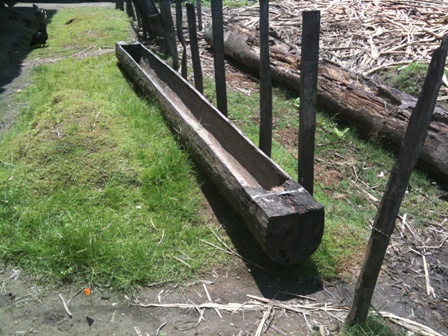At first I thought they were canoes or some kind of animal feeding trough but native people here in eastern Peru use these coshos as giant mixing bowls to prepare mazatto, their fermented brew. We talked about mazatto in earlier blogs and how a half-dozen eats and drinks come from the ubiquitous yuca plant, manihot esculenta, sometime called manioc or cassava in other parts of the tropics.

If you want to make mazatto for an entire village then you’ll need something the size of a cosho to mix the stuff. Tradition has it that the brewer must spit into the mix to get the fermentation going. The resulting brew is white, kind of sour. And has the faint whiff of some juice goin’ bad. Alcohol content is low. You’ll need to drink gallons of mazatto to get a decent buzz. But people here in Peru love their mazatto and I’ve spent many pleasant evenings drinking gourds full of the stuff and listening to endless stories of great fish catches that somehow got away.
The cosho in the photo I stepped off at about 16 feet. I didn’t heft it but it’s going to be heaver than a dugout canoe. It would package in the same kind of crate and I could ship a cosho to the states for a rainforest display. As usual one would need a few items besides the cosho to make a good display—maybe a big maso for crushing the yuca, a couple of big wooden ladles and maybe even a basket of dried yuca nearby.
I need to find out more about these coshos—the kind of wood used, who makes them, and does the design vary from tribe to tribe. Also any thoughts on how to build a display with a cosho would be helpful.
John
